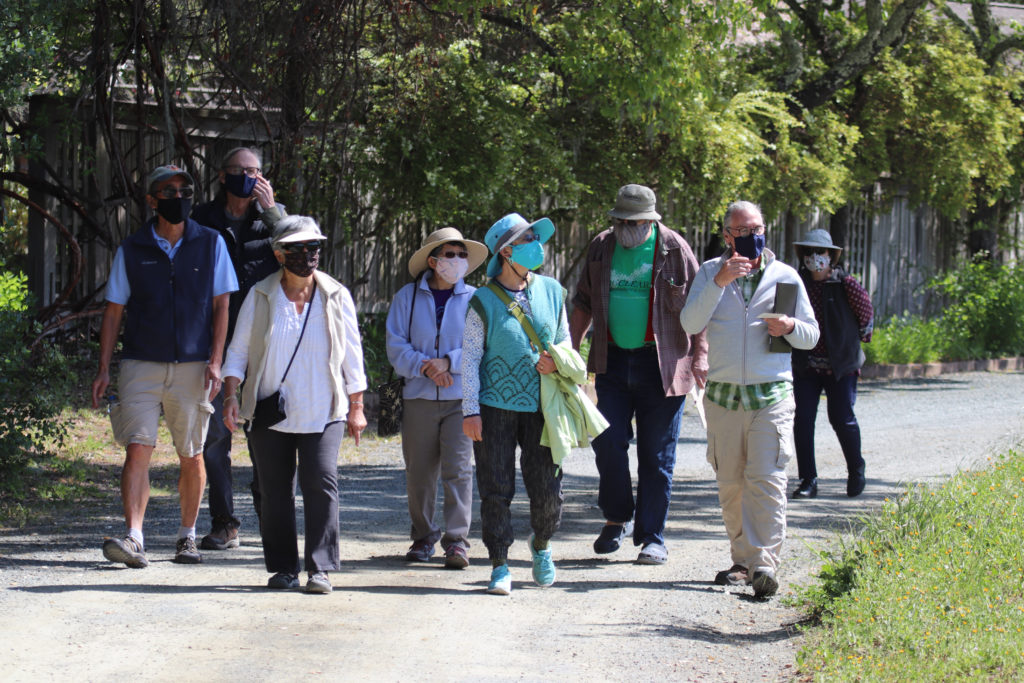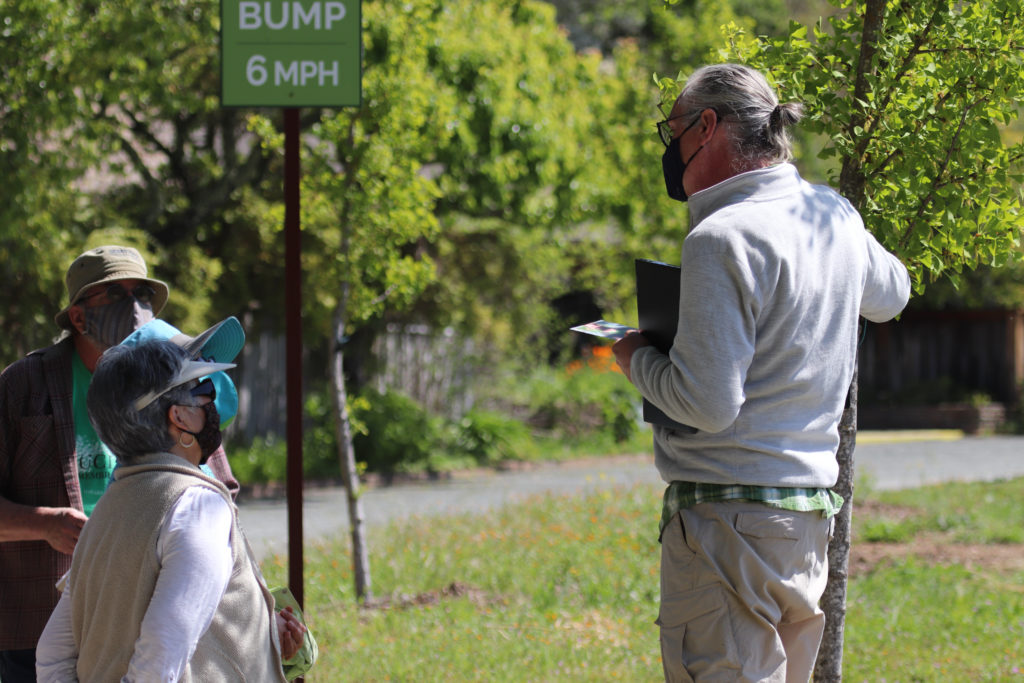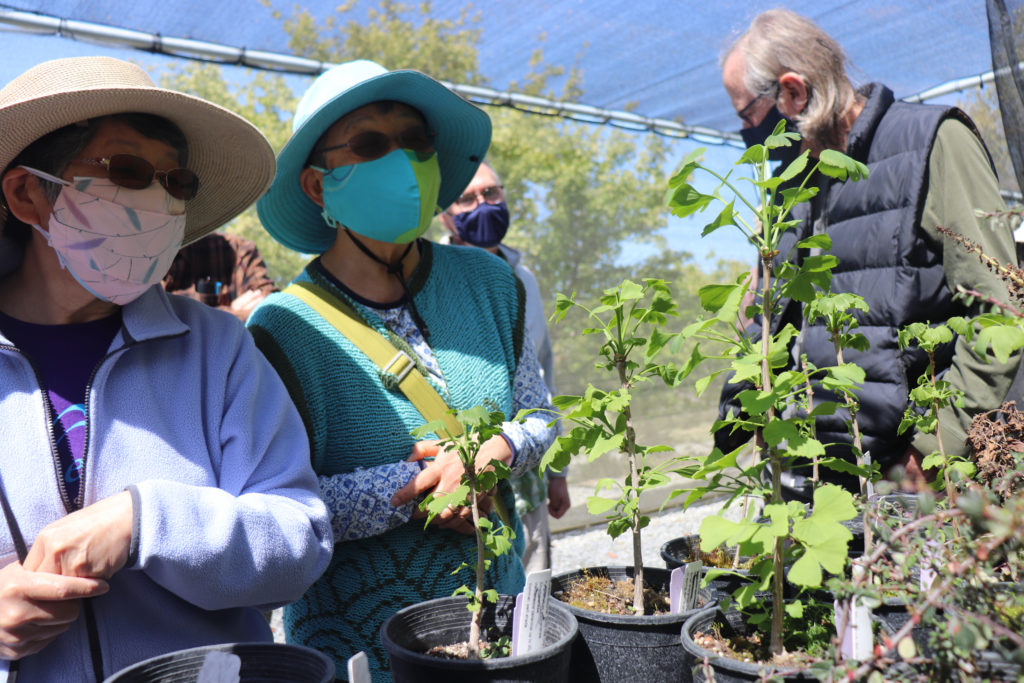April 18, 2021

Sonoma County Peace Crane Project members visit seedlings sprouted from seeds of a tree that survived the nuclear bombing in Hiroshima. It is cared for at Sonoma Botanical Garden
On Friday April 16, members of the Sonoma County Peace Crane Project visited Sonoma Botanical Garden in Glen Ellen to see some special Ginkgo saplings, sprouted from seeds of a tree that survived the atomic bombing of Hiroshima.
The group plans to plant the Ginkgo trees on the grounds of Sonoma State University to memorialize the victims and the survivors of the nuclear bombings, nuclear tests, accidents, and contamination. The group conceived this project in partnership with Green Legacy Hiroshima, which has sent seeds to many organizations around the world.
During their visit, the group met with Michael Wenzel, Curator of Living Collections at Sonoma Botanical Garden (formerly Quarry Hill Botanical Garden), who showed off the ten robust saplings planted in 1-gallon pots. The Botanical Garden planted the seeds shipped from Hiroshima in July, 2019 and has cared for the saplings since then.
“These trees are hardy, and often used in urban landscaping because they can survive challenging conditions,” Wenzel said, noting that Gingko trees survived atomic bombing, one of the most devastating events in human history. The Gingko biloba, an ancient species known for its longevity, can live over 1,000 years.
When the United States bombed the Japanese cities of Hiroshima and Nagasaki in 1945, over 100,000 people perished instantly, mostly civilians and children. Countless more died from radiation poisoning, cancers and the utter devastation of the means of survival.
Miraculously, in the midst of such desolation a few hundred trees survived. People collected, nurtured, and propagated the seeds and trees grew again, witness to their strength, and the hope and perseverance of the human spirit.
“We are very excited to visit these special trees, which will be the central feature of a memorial to victims of the atomic bombing and their descendants,” said Sachiko Knappman, a member of Sonoma County Peace Crane Project from Rohnert Park.
Green Legacy Hiroshima is a non-profit organization, founded to safeguard and spread seeds from Hiroshima survivor trees as a message of peace. Sonoma County Peace Crane will join the 110 other communities in 36 countries in nurturing these trees as they communicate their hopeful message worldwide.
“We are very grateful to Sonoma Botanical Garden for providing the perfect environment to grow the seeds entrusted to us, direct descendants of the trees that survived the bombings. The Botanical Garden has years of experience growing Asian trees and plants, which makes it an ideal place for the Hiroshima seeds,” said Robert Doane of Petaluma.
Plans are underway for trees with interpretive signs and educational events.
“We are especially excited to have the opportunity to locate the gingko trees near the existing Holocaust and Genocide Memorial Grove, which has at its heart a mature horse chestnut grown from the tree that Anne Frank could see from her place of hiding,” said Jay Pedersen from Sebastopol, a retired landscape department staff member at Sonoma State University.
The Sonoma County Peace Crane Project, founded over 35 years ago, is an all-volunteer community group with a vision of creating a world free of nuclear weapons, where people can learn to live together in harmony and peace. To raise awareness about nuclear issues, the group has organized exhibits, cultural events, youth essays and art contests.
In spite of the pandemic and the obstacles it has brought, planning and preparation for the creation of a Peace Tree memorial dedicated to a nuclear free world are ongoing by the dedicated volunteers.
(END)



